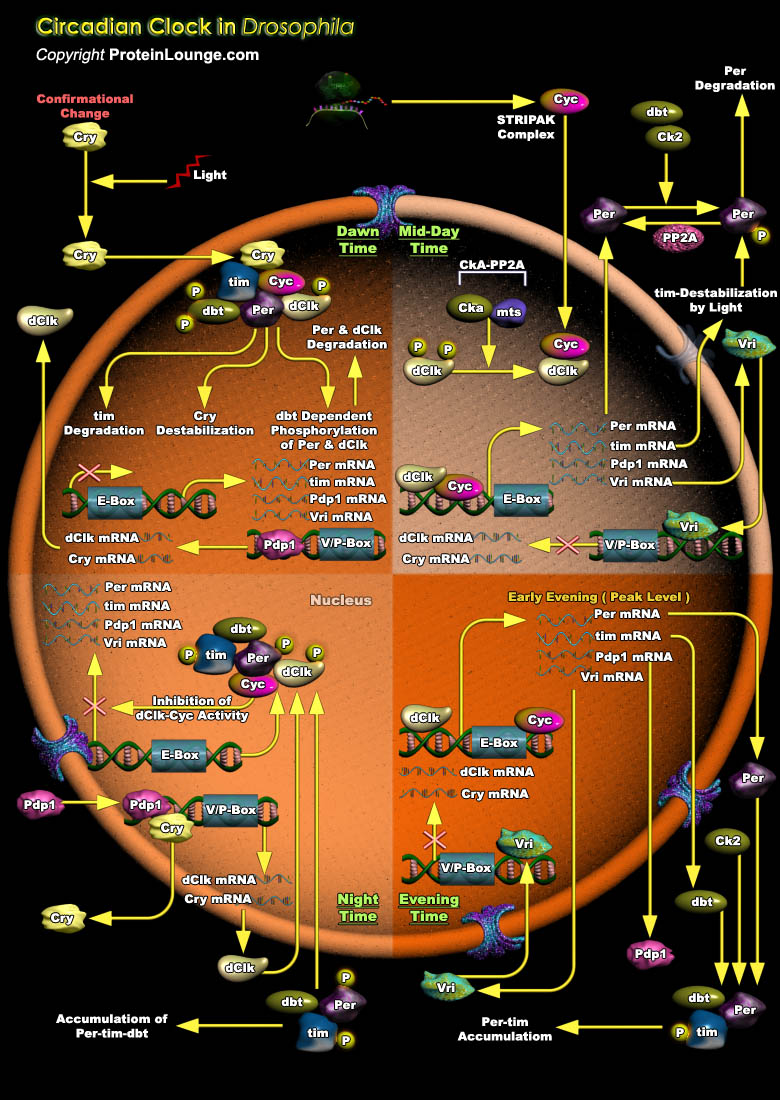
Circadian rhythms are daily rhythms of biological processes in behavior or physiology that reoccur approximately every 24 hr. They are determined and modified by environmental cues like light and temperature, but can also persist in the absence of these cues. Although circadian rhythms are present in nearly all living organisms, Drosophila melanogaster is used as model organism to study the phenomena due to many advantages including low genetic redundancy, functional simplicity, its clock regulated behavior including eclosion, olfactory sensitivity, egg laying , courtship, gustatory sensitivity or learning and memory, and the ability to conduct large-scale genetic screens (Ref.1). Circadian clocks consist of 3 parts: input pathway, circadian oscillator[..]

Circadian clocks are molecular time-keeping mechanisms that reside in a diverse range of cell types in a variety of organisms. The primary role of these cell-autonomous clocks is to maintain their own 24-hour molecular rhythm and to drive the rhythmic expression of genes involved in physiology, metabolism and behavior. The ability of the clock to persist in the absence of environmental cues provides internal temporal organization so that rhythmic activities can occur at characteristic times during the circadian cycle. In addition, two other clock properties, entrainment (that is, setting the clock to local time with respect to environmental cycles) and temperature compensation (that is, the ability of the clock to run at the same rate at different temperatures) ensure[..]
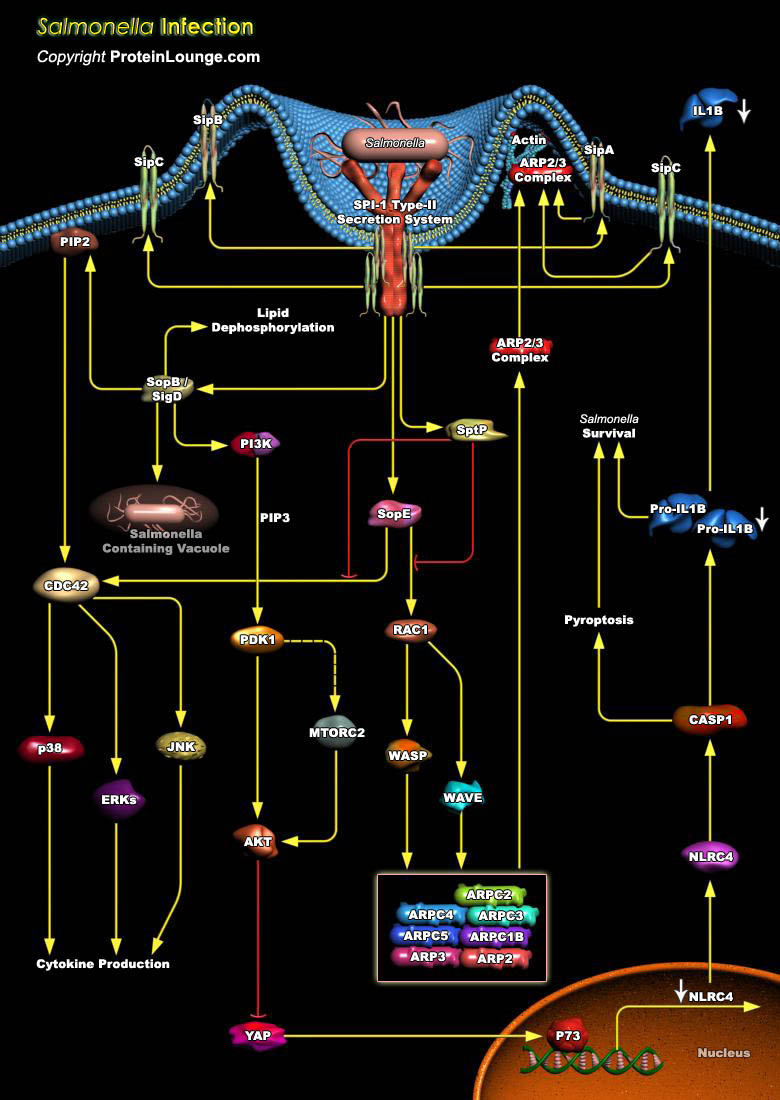
Phagocytic cells are a critical line of defense against infection. The ability of a pathogen to survive and even replicate within phagocytic cells is a potent method of evading the defense mechanisms of the host. A number of pathogens survive within macrophages after phagocytosis and this contributes to their virulence. Salmonella is one of these pathogens. Salmonella spp are Gram-negative bacteria capable of infecting a wide range of host species, including humans, domesticated and wild mammals, reptiles, birds and insects. They are the etiologic agents of a variety of diseases globally defined as salmonellosis. Salmonellosis is one of the most important human enteric diseases worldwide. Salmonella infections display a broad range of clinical manifestations that are[..]
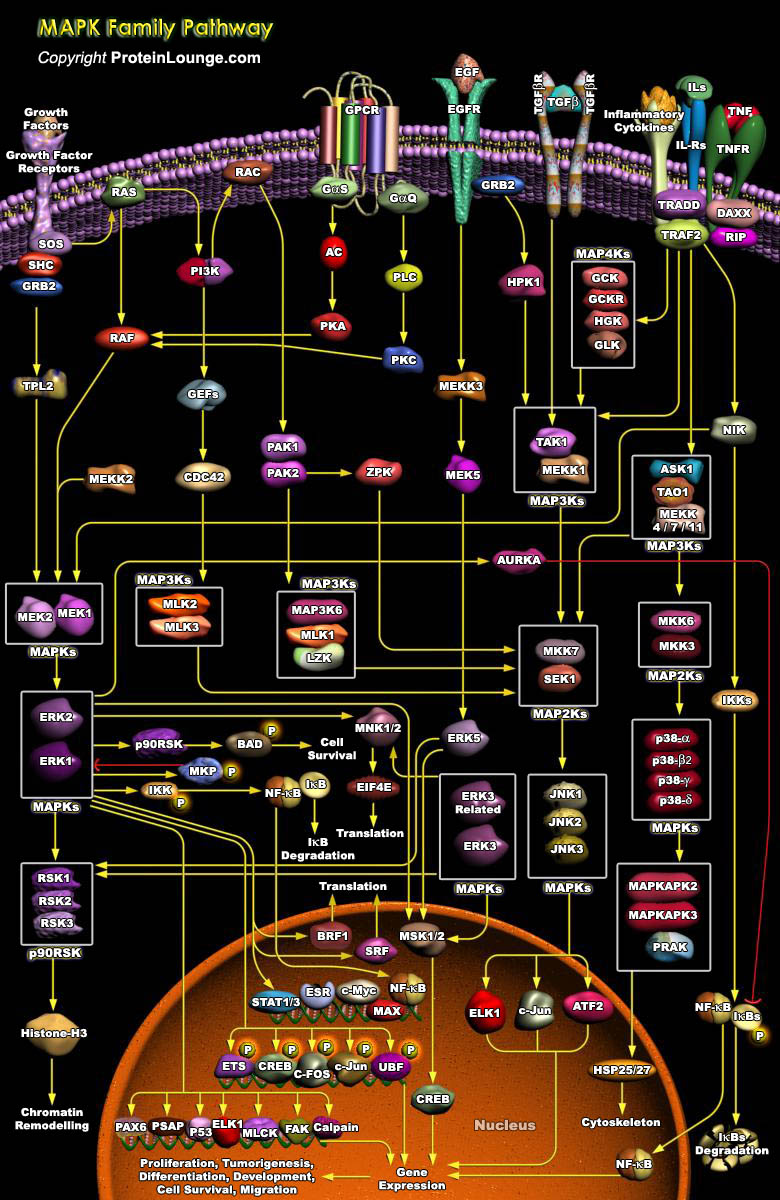
Protein kinases are ubiquitous enzymes that are able to modulate the activities of other proteins by adding phosphate groups to their tyrosine, serine, or threonine amino acids (phosphorylation). MAPKs (Mitogen-Activated Protein Kinases), which are activated by many different signals, belong to a large family of serine/threonine protein kinases that are conserved in organisms as diverse as yeast and humans. MAPKs deliver extracellular signals from activated receptors to various cellular compartments, notably the nucleus, where they direct the execution of appropriate genetic programs, including activation of gene transcription, protein synthesis, cell cycle machinery, cell death, and differentiation. A unique feature of MAPKs is that they themselves can be activated[..]
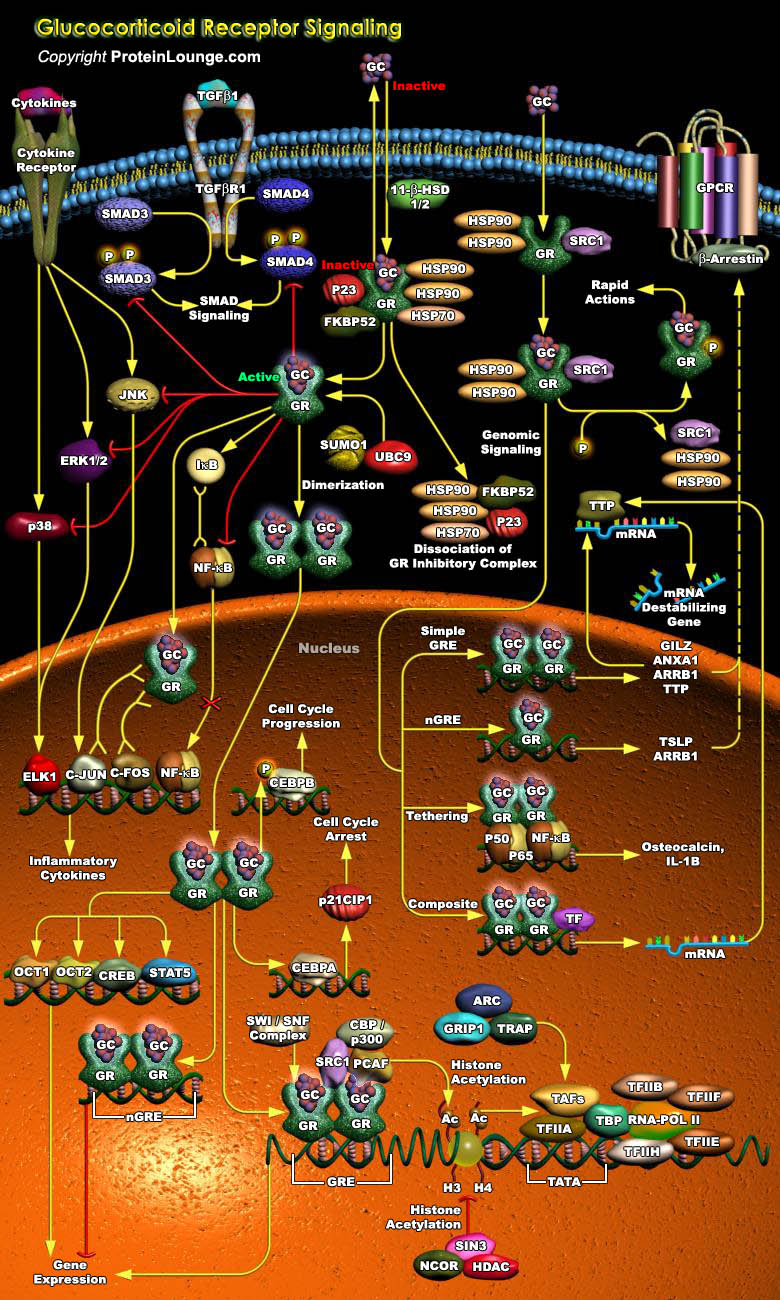
Our bones get more brittle with increasing age, and to add insult to injury, the most effective therapy for another problem that is associated with getting older, rheumatoid arthritis, often adds to the problem by causing bone resorption. The Glucocorticoid steroids, are the best available anti-inflammatories, and are used widely in the treatment of arthritis, as well as other inflammatory conditions such as dermatitis and autoimmune diseases. The Glucocorticoids, secreted by the Adrenal Cortex are powerful anti-inflammatory compounds due to their ability to inhibit all stages of the inflammatory response, from redness to wound healing to cell proliferation (Ref.1). They are powerful anti-inflammatory compounds that have the ability to inhibit all stages of the[..]

Apoptosis, necroptosis, and pyroptosis are the three major ways of PCD(programed cell death) following virus infection. Among them, apoptosis is the most extensively investigated PCD during viral infection. Apoptosis elicited by virus infection has both negative and positive influence on viral replication.Apoptosis is triggered by two distinct signaling pathways, namely the intrinsic and extrinsic pathways(Ref.1).The intrinsic apoptotic pathway is elicited by a wide range of intracellular stress conditions, including cytokine deprivation, DNA damage, oxidative stress, cytosolic Ca2+ overload and endoplasmic reticulum stress whereas the extrinsic apoptotic pathway is activated by extracellular stress stimulation that is sensed and triggered through activation of death[..]
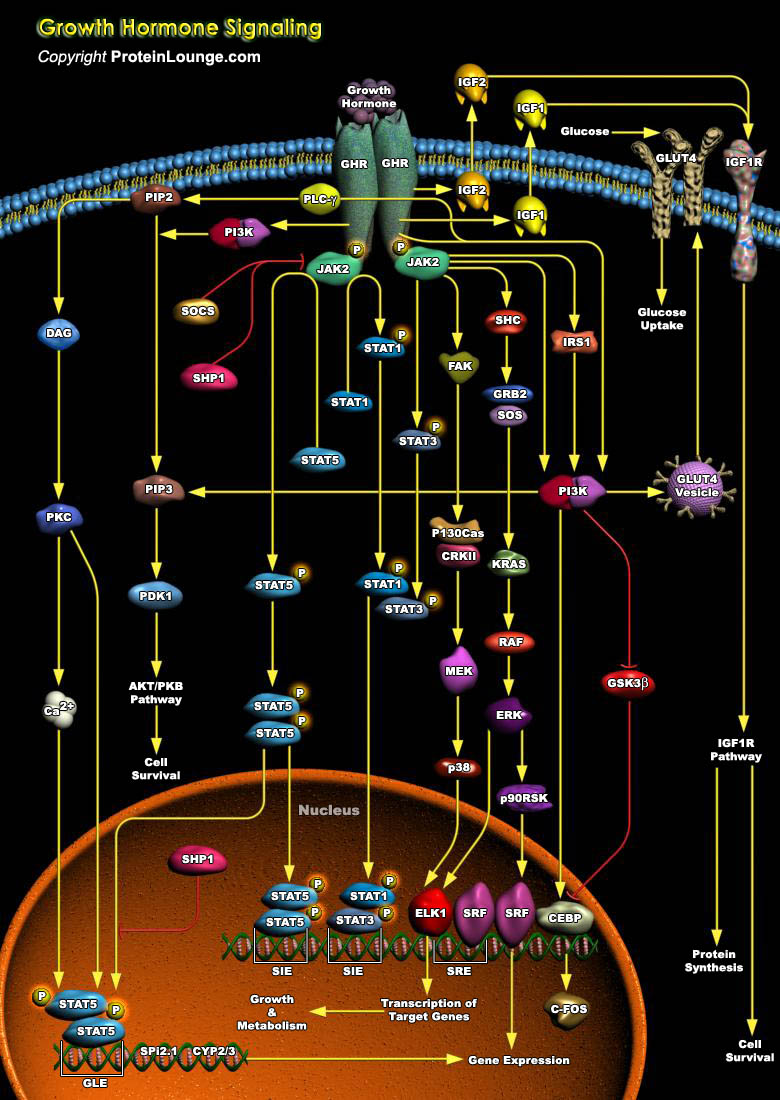
Most aging individuals die from atherosclerosis, cancer, or dementia; but in the oldest old, loss of muscle strength resulting in frailty is the limiting factor for an individual's chances of living an independent life until death. Three hormonal systems show decreasing circulating hormone concentrations during normal aging: (i) estrogen (in menopause) and testosterone (in andropause), (ii) dehydroepiandrosterone and its sulphate (in adrenopause), and (iii) the growth hormone/IGF1 axis (in somatopause). Physical changes during aging have been considered physiologic, but there is evidence that some of these changes are related to this decline in hormonal activity. Science recognizes aging as a disease that can be reversed to a large degree by increasing GH (Growth[..]
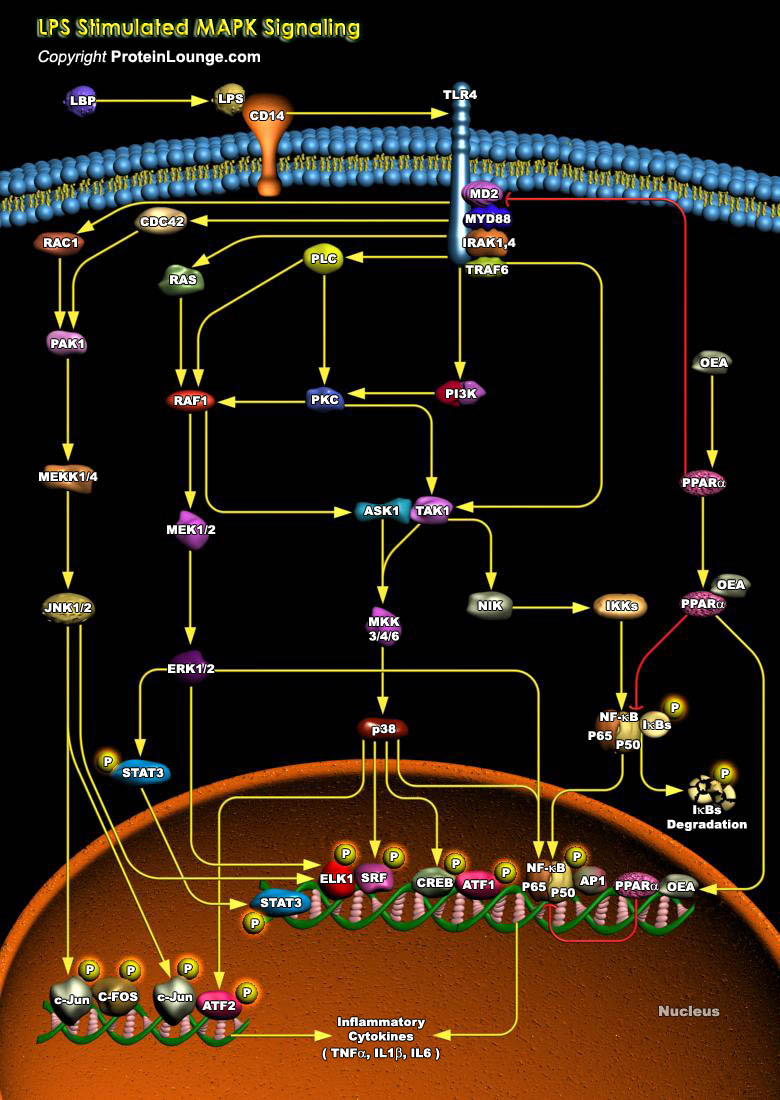
Endotoxin LPS (Lipopolysaccharide) is a component of the outer membrane of Gram-negative bacteria that potently promotes the activation of macrophages and microglia cells, which are important sensors of infection by bacteria, fungi, and viruses, in both the periphery and the CNS (Central Nervous System). There are several known LBP (LPS-Binding Proteins) present on macrophage membranes, including CD14, CD11b/18, and TLR (Toll-like Receptors). TLRs are mammalian homologs of the Drosophila Toll receptor and are involved in initiating innate immune defense against bacteria and fungi. CD14 lacks a transmembrane domain and is unable to initiate signals on its own. Thus, the TLR4 has emerged as a potential signaling partner for LPS/CD14 interactions(Ref.1).The key downstream[..]
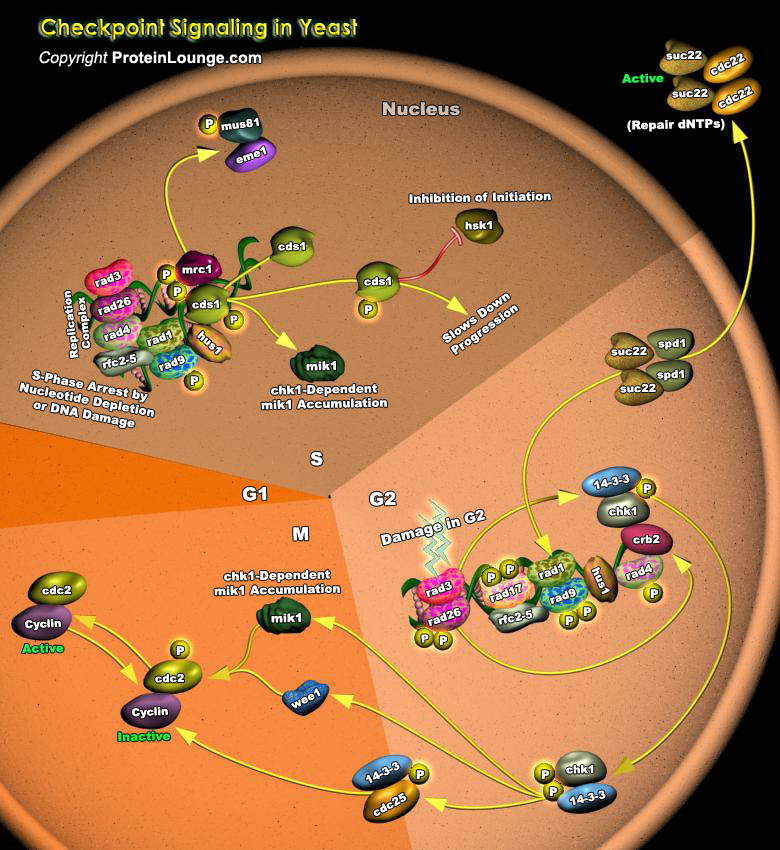
The maintenance of genomic integrity is important for the survival of eukaryotic cells. Checkpoint mechanisms prevent cell cycle transitions until previous events have been completed or damaged DNA has been repaired. Various forms of DNA damage and various treatments that block replication trigger these checkpoints. Checkpoint pathways and proteins are evolutionarily conserved from yeast to man, underlining their importance in maintaining genomic integrity. In the fission yeast, S. pombe (Schizosaccharomyces pombe), several checkpoint pathways monitor the status of the DNA and arrest the cell cycle in response to DNA damage or inhibition of DNA replication induced by Ionizing Radiation and UV light. The checkpoint Rad proteins, rad1, rad3, rad4, rad9, rad17, rad26and[..]
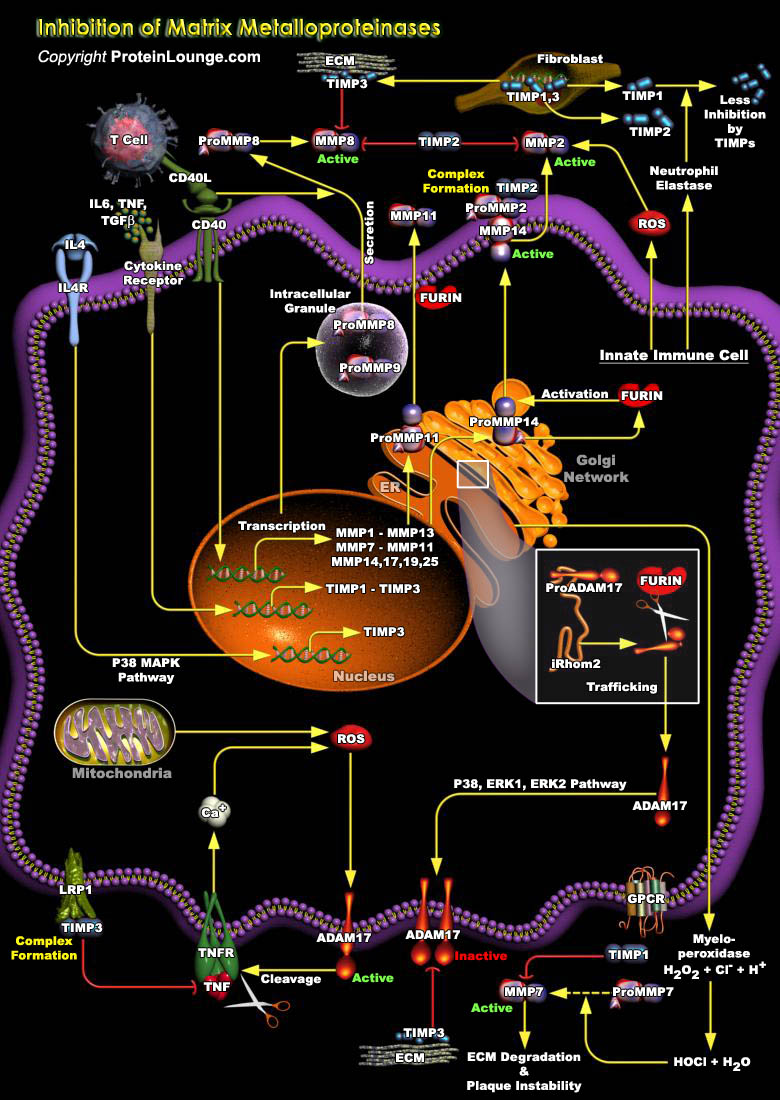
MPs (Metalloproteinases) play a key role in the responses of cells to their microenvironment. By effecting proteolytic degradation or activation of cell surface and ECM (Extracellular Matrix) proteins they can modulate both cell-cell and cell-ECM interactions, which influence cell differentiation, migration, proliferation and survival. Both secreted and membrane bound forms of metalloproteinases have been implicated in pericellular proteolysis, including the MMPs (Matrix Metalloproteinases), the adamalysin-like proteinases with both metalloproteinase and disintegrin-like domains (ADAMs and their counterparts that have a thrombospondin-1-like domain, ADAM-TSs) and the Astacins (Ref.1). MMPs are endopeptidases belonging to the metzincin super family, which depend on the[..]
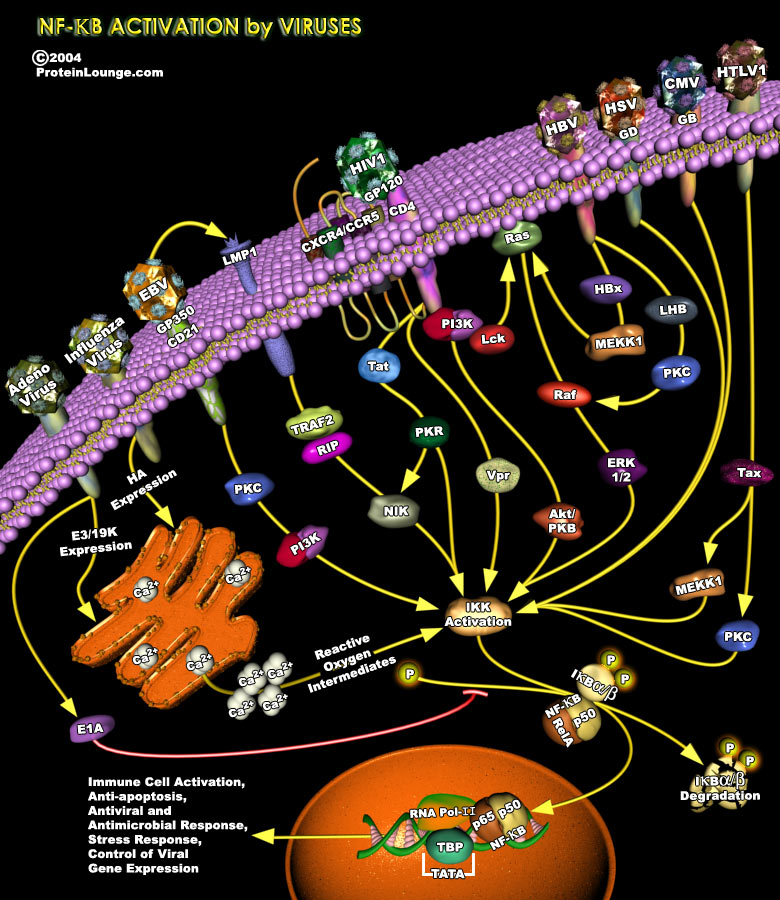
The transcription factor nuclear factor-kappa B (NF-kappaB) plays a fundamental role in the innate antiviral response, acting as a hub network in signal transduction that connects cellular sensors of viral invasion with effector mechanisms of antiviral defence (Ref.1). NF-kappaB pathway appears to be an attractive target for common human viral pathogens. Many viruses, including several human pathogens such as HIV1, the human T-cell leukemia virus HTLV1, Influenza virus, hepatitis B and C viruses, Adenovirus, Kaposi’s sarcoma-associated herpesvirus (KSHV), Epstein-Barr virus (EBV), CMV as well as herpes viruses have evolved different strategies to modulate the NF-kappaB pathway, most of which converge on IKK activation (Ref.2).Human immunodeficiency virus-1 (HIV1)[..]
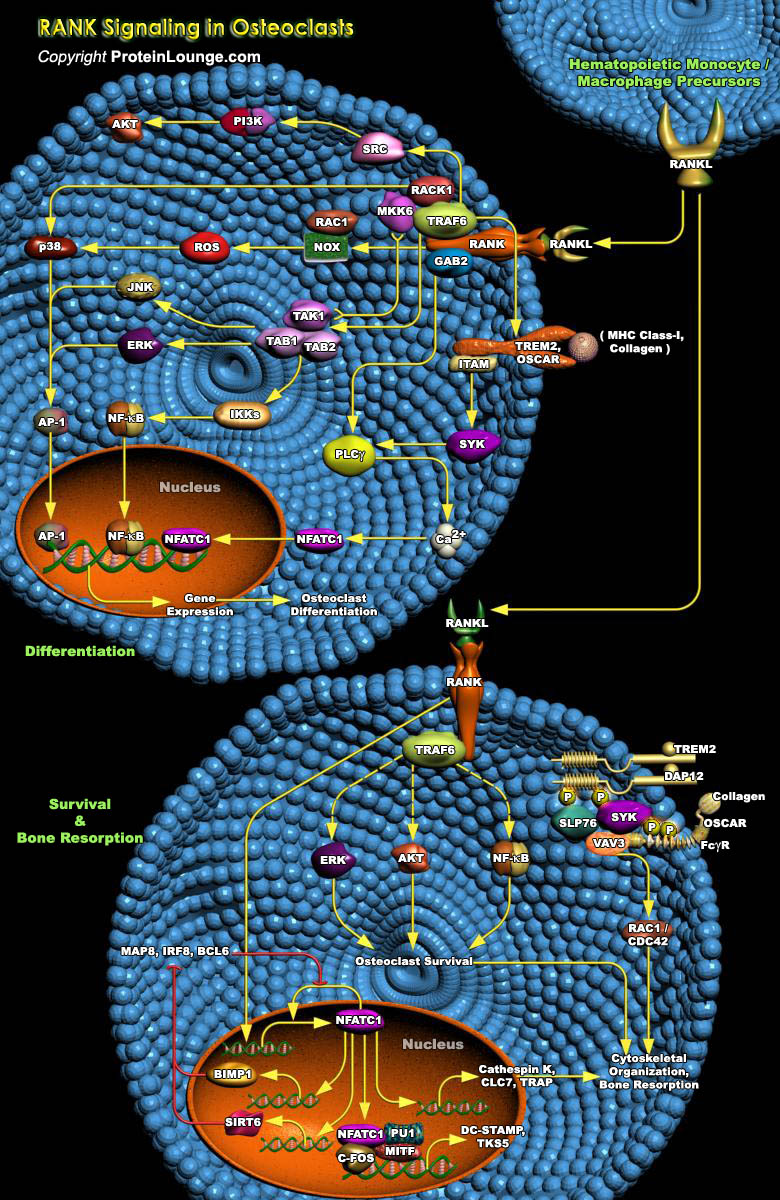
TNF (Tumor Necrosis Factor) and TNFR (Tumor Necrosis Factor Receptor) family proteins play important roles in the control of cell death, proliferation, autoimmunity, the function of immune cells, or the organogenesis of lymphoid organs. Recently, novel members of this large family have been identified that have critical functions in immunity and that couple lymphoid cells with other organ systems such as bone remodeling and mammary gland formation in pregnancy. Bone remodeling results from the coordinate action of osteoclasts and osteoblasts, where osteoclasts cause bone resorption and osteoblasts causes formation of new bone. Regulation of bone remodeling occurs through multiple mechanisms that ultimately converge on the interaction of osteoclasts or their precursors[..]

